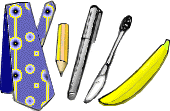| |
In Lesson 10, we learned the expression かいものにいきます ("go shopping").
In this lesson, we will learn to use the same particle に
preceded by a coming and going verb in its verb stem form: /Verb-stem
+ に/. This structure can be combined with a motion verb
to express a notion of "come/go somewhere for the purpose of
V-ing" or "come/go to V."
The verb stem is a ます form of the verb minus ます.
For example, 食べ
is the verb stem of 食べます ("eat").
| |
V-stem |
に |
Motion Verb |
|
| おひるを |
食べ |
に |
かえりました。 |
He went home to eat lunch. |
| 本を |
買い |
に |
(本屋へ) 行きましょう。 |
Let's go (to the bookstore)
to buy books. |
| 何を |
し |
に |
来ましたか。 |
What did you come here for? |
| また |
あそび |
に |
来て下さい。 |
Please come to play again. |
Compare this structure with the following /V1て+ V2/ pattern we
learned in Lesson 18.
| おひるごはんを |
食べて |
かえりました。 |
He went home after eating lunch.
(Lit. "He ate lunch and went home.") |
Caution: Verb stems
are not the same as the Vて forms. The first sentence below is ungrammatical.
* おひるごはんを食べてにかえりました。[ungrammatical]
→ おひるごはんを食べにかえりました。[correct]
|
| |
So far, we have learned counters to count money (円), telephone
numbers (ばん), people (り/にん), age (つ/さい), hours (じ/じかん) and minutes
(ふん), days (にち), months (がつ/かげつ), years (ねん), and so on. To count
long cylindrical objects the counter 本 (pronounced as ほん,
ぽん, or ぼん) is used. Don't confuse this with the word
for "book" also written as 本.
The counter まい is for thin, flat objects like paper; the
counter さつ is for books and other bound objects; the counter
こ is for small, solid objects. Note that books (本)
is counted by the さつ counter, not the 本 counter.
In Lesson 19, we learned that the counter つ can be used
to count age from one to nine. The counter つ can also be used to
count objects of indefinite shapes up to nine (9). ("Ten"
is とお.)
|
本 counter

(long, thin objects)
|
まい counter
(thin, flat objects)

|
|
さつ counter
(bound objects)

|
こ counter
(small solids)

|
|
つ counter

indefinite shapes (or people's age)
(up to 9)
|
|